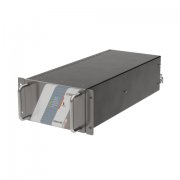Trial Was Stopped Due to Hepatotoxicity and Consequently TAK-994 Program Terminated for Further Development
In Patients with Narcolepsy Type 1, Oral Orexin Receptor 2 Agonist Demonstrated Statistically Significant Improvement in Daytime Wakefulness; Weekly Cataplexy Rates Reduced or Abolished at All Doses Compared to Placebo
Findings Indicate Orexin Receptor 2 as Promising Novel Biologic Target for Future Development of Narcolepsy Type 1 Treatments
Takeda Continues to Advance a Multi-Asset Orexin Agonist Franchise
OSAKA, Japan & CAMBRIDGE, Mass.--(BUSINESS WIRE)--Takeda (TSE:4502/NYSE:TAK) today announced that data from the Phase 2 study of orexin receptor 2 (OX2R) agonist TAK-994 in patients with narcolepsy type 1 (NT1) was published in The New England Journal of Medicine. These data represent the first-ever clinical data to be published of an oral orexin agonist in NT1. The article appears in the July 27 issue of the journal and is titled, “Oral Orexin Receptor 2 Agonist in Narcolepsy Type 1.”
“There is significant unmet need for patients with narcolepsy, a chronic neurologic disease caused by severe loss or absence of the neuropeptide orexin, also known as hypocretin. Today, most patients with NT1 require multiple therapies that only manage excessive daytime sleepiness and cataplexy. Moreover, none of the available agents target the underlying cause of the disease,” said one of the TAK-994 study principal investigators Yves Dauvilliers, M.D., Director, Sleep-Wake Disorders Center, Department of Neurology, Gui de Chauliac Hospital, Montpellier, France. “Although this study was not designed to compare TAK-994, the first-in-class oral OX2R agonist, with other narcolepsy drugs, its effectiveness on objective measures of wakefulness, self-reported assessment of daytime sleepiness, and frequency of cataplexy was impressive. However, TAK-994 was associated with hepatotoxicity, therefore studies with new well tolerated OX2R agonists are strongly requested.”
About the TAK-994-1501 Phase 2 Study
Patients aged 18-65 years with confirmed NT1 were randomly assigned to twice-daily oral TAK-994 30, 90, 180 mg, or placebo.
- Primary endpoint was the change in mean sleep latency in minutes on the Maintenance of Wakefulness Test (MWT) from baseline to week 8 (test range: 0-40, normal >=20 minutes).
- Secondary endpoints included change in Epworth Sleepiness Scale (ESS) score (scale range: 0-24, normal <10), weekly cataplexy rate (WCR), and treatment-emergent adverse events (TEAEs).
Patients completing the Phase 2 treatment period were eligible for inclusion in an extension trial. Limitations of the trial are that it was terminated early, the number of participants was small, and there was substantial dropout and missing data. The trial was prematurely terminated due to hepatotoxicity in several patients and this agent will not go forward as a treatment for narcolepsy but may indicate a biologic target for future development. Another Takeda oral OX2R agonist is being evaluated in two Phase 2, randomized, double-blind, placebo-controlled trials for the treatment of narcolepsy.
Efficacy Results
Of 73 patients enrolled, 17 received TAK-994 30 mg twice daily, 20 received 90 mg twice daily, 19 received 180 mg twice daily, and 17 received placebo.
- Primary endpoint results: Changes in mean sleep latency on MWT to week 8 were available in 56% of patients, with least square means of -2.5 minutes for placebo, 23.9 minutes, 27.4 minutes, and 32.6 minutes (placebo-adjusted least square mean estimates of 26.4 minutes, 29.9 minutes, and 35.0 minutes) for the three doses respectively; P<0.001 for all comparisons.
- Secondary endpoint results: Changes in ESS to week 8 were available in 58% of participants with least square means of -2.1 for placebo, -12.2, -13.5, and -15.1 (placebo-adjusted least square mean estimates of -10.1, -11.4, and -13.0) for the three doses respectively. Week 8 WCR were available in 53% of participants, with weekly incidence rate estimates of 5.83 for placebo, 0.27, 1.14, and 0.88 (rate ratio of 0.05, 0.20, and 0.15 relative to placebo) for the three doses respectively.
After 8 weeks of TAK-994, sleep latency on MWT was above the normal threshold (>=20 minutes) for most patients. Similar effects were observed for the ESS.
Safety Results
Forty-four (79%) patients treated with TAK-994 had adverse events; the most common were urinary urgency or frequency. More patients experienced TEAEs with TAK-994 than with placebo, with a greater number and severity of TEAEs observed with higher TAK-994 doses. Most TEAEs were mild in severity. Eight patients exceeded predefined alanine transaminase (ALT) and/or aspartate transaminase (AST) thresholds for subject discontinuation, including three cases meeting Hy’s law criteria (ALT/AST abnormalities >3 x upper limit of normal combined with bilirubin >2 x upper limit of normal; two with TAK-994 180 mg and one with 90 mg), indicating drug-induced hepatotoxicity and leading to the early termination of the trial. No specific risk factors were identified. The current hypothesis is that TAK-994 associated drug-induced liver injury is caused by reactive metabolites and is unlikely to be an on-target effect of OX2R activation as orexin receptors are not expressed on human hepatocytes or on most immune cells.
“As leaders in orexin research and development, Takeda is committed to applying our learnings from the TAK-994 trial and our deep and growing understanding of orexin biology as we drive forward the research and development of multiple orexin assets. We would like to thank the patients, caregivers and investigators who participated in the TAK-994 clinical trials and are committed to continue developing and delivering transformative treatments to people living with narcolepsy and other hypersomnolence disorders. Takeda is also exploring other indications that could benefit from this mechanism,” said Sarah Sheikh, M.Sc., B.M., B.Ch, Head, Neuroscience Therapeutic Area Unit at Takeda. “Orexin programs in development include the oral OX2R agonist TAK-861, currently being evaluated in two Phase 2 trials for the treatment of narcolepsy type 1 (NCT05687903) and narcolepsy type 2 (NCT05687916), and danavorexton (TAK-925), an intravenously administered OX2R agonist we are investigating in a Phase 2 study of people with obstructive sleep apnea after general anesthesia (NCT05814016).”
About Takeda
Takeda is focused on creating better health for people and a brighter future for the world. We aim to discover and deliver life-transforming treatments in our core therapeutic and business areas, including gastrointestinal and inflammation, rare diseases, plasma-derived therapies, oncology, neuroscience and vaccines. Together with our partners, we aim to improve the patient experience and advance a new frontier of treatment options through our dynamic and diverse pipeline. As a leading values-based, R&D-driven biopharmaceutical company headquartered in Japan, we are guided by our commitment to patients, our people and the planet. Our employees in approximately 80 countries and regions are driven by our purpose and are grounded in the values that have defined us for more than two centuries. For more information, visit www.takeda.com.
Important Notice
For the purposes of this notice, “press release” means this document, any oral presentation, any question and answer session and any written or oral material discussed or distributed by Takeda Pharmaceutical Company Limited (“Takeda”) regarding this release. This press release (including any oral briefing and any question-and-answer in connection with it) is not intended to, and does not constitute, represent or form part of any offer, invitation or solicitation of any offer to purchase, otherwise acquire, subscribe for, exchange, sell or otherwise dispose of, any securities or the solicitation of any vote or approval in any jurisdiction. No shares or other securities are being offered to the public by means of this press release. No offering of securities shall be made in the United States except pursuant to registration under the U.S. Securities Act of 1933, as amended, or an exemption therefrom. This press release is being given (together with any further information which may be provided to the recipient) on the condition that it is for use by the recipient for information purposes only (and not for the evaluation of any investment, acquisition, disposal or any other transaction). Any failure to comply with these restrictions may constitute a violation of applicable securities laws.
The companies in which Takeda directly and indirectly owns investments are separate entities. In this press release, “Takeda” is sometimes used for convenience where references are made to Takeda and its subsidiaries in general. Likewise, the words “we”, “us” and “our” are also used to refer to subsidiaries in general or to those who work for them. These expressions are also used where no useful purpose is served by identifying the particular company or companies.
Forward-Looking Statements
This press release and any materials distributed in connection with this press release may contain forward-looking statements, beliefs or opinions regarding Takeda’s future business, future position and results of operations, including estimates, forecasts, targets and plans for Takeda. Without limitation, forward-looking statements often include words such as “targets”, “plans”, “believes”, “hopes”, “continues”, “expects”, “aims”, “intends”, “ensures”, “will”, “may”, “should”, “would”, “could”, “anticipates”, “estimates”, “projects” or similar expressions or the negative thereof. These forward-looking statements are based on assumptions about many important factors, including the following, which could cause actual results to differ materially from those expressed or implied by the forward-looking statements: the economic circumstances surrounding Takeda’s global business, including general economic conditions in Japan and the United States; competitive pressures and developments; changes to applicable laws and regulations, including global health care reforms; challenges inherent in new product development, including uncertainty of clinical success and decisions of regulatory authorities and the timing thereof; uncertainty of commercial success for new and existing products; manufacturing difficulties or delays; fluctuations in interest and currency exchange rates; claims or concerns regarding the safety or efficacy of marketed products or product candidates; the impact of health crises, like the novel coronavirus pandemic, on Takeda and its customers and suppliers, including foreign governments in countries in which Takeda operates, or on other facets of its business; the timing and impact of post-merger integration efforts with acquired companies; the ability to divest assets that are not core to Takeda’s operations and the timing of any such divestment(s); and other factors identified in Takeda’s most recent Annual Report on Form 20-F and Takeda’s other reports filed with the U.S. Securities and Exchange Commission, available on Takeda’s website at: https://www.takeda.com/investors/sec-filings/ or at www.sec.gov. Takeda does not undertake to update any of the forward-looking statements contained in this press release or any other forward-looking statements it may make, except as required by law or stock exchange rule. Past performance is not an indicator of future results and the results or statements of Takeda in this press release may not be indicative of, and are not an estimate, forecast, guarantee or projection of Takeda’s future results.
Medical Information
This press release contains information about products that may not be available in all countries, or may be available under different trademarks, for different indications, in different dosages, or in different strengths. Nothing contained herein should be considered a solicitation, promotion or advertisement for any prescription drugs including the ones under development.








